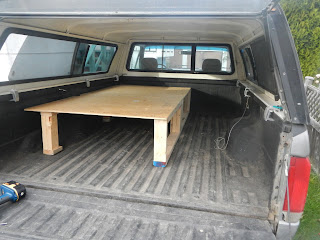I researched over a dozen pet GPS systems online. This is one
of two that work in Canada. Best Buy used to carry it but not anymore. You can get it on Amazon.ca or through the Tractive website which takes a bit longer to ship.
Cost: Around $200, watch for it to go on sale for $150 occasionally. The subscription
service is $7/month or $70/year for Basic or $11/month or $80/year Premium.
Device: The device is a
small plastic square that can sit in the palm of your hand or slip in a pocket easily. It is self contained, and has a GPS receiver and a cell phone SIM card.
It gets its location form a GPS Satellite, and then sends its location to the
Tractive server via the SIM card.
Battery: It charges in 2 hours like stated.
The charger must be applied carefully in order to line up the prongs without damaging
them. Battery length is stated as 3-5 days. After the break-in period, this goes down to 1-2 days. More like 1.5, so best to charge it each night. If you use live tracking in a sketchy cell phone area, this goes down to less than an hour.
Waterproof: Yep! Have tested.
Attachment: It is sent with two plastic collar
clips, one for skinny and one for wide collars. They look incredibly flimsy and
prone to breaking. After a year of multiple (>10) units in use, only one device has fallen off and been lost. Two units have been destroyed because of sibling dogs chewing them when wrestling though, so maybe sew a cover if that's how your household works. I think the
clip is most likely to break when you try and remove it or put it on, so do so
carefully!
Activation: To activate the device you log in via the Tractive website. Once logged in, activation is simple. You can choose to pay
for the Basic Plan ($7/mo or $70/yr) or the Premium Plan ($11/mo or $80/yr). It
is pre-pay with no contract or service term, however once you have entered your
credit card number if you don't un-click auto-renew it will charge you for the
next mo/yr.
Computer: The browser application for the
unit is pretty straight forward and easy to use. The GPS updates its position
every few minutes, less often if stationary and more often if moving. If you
activate live tracking, it updates continuously and draws on the map where it
has been. If you turn on history it will show you positions for the past 24 hrs
if you have the basic subscription, more if you have premium. You cannot set a
safe zone in the browser, only using the mobile app.
Mobile App: Within the app you can build a pet profile (photo, name,
history, medical info) and link it to a tracker. (Or not, if you don't have a
tracker and just want to store medical info). The app isn't too hard to figure
out, and the FAQ online pretty much explains anything you missed. You can turn on/off showing your location (ie your phone, not the dog), you can switch the map from road to satellite and hybrid (which I suggest, as it's not very useful trying to find your dog in a park when the park is just a giant green square). You can set a safe zone on the app and change it's size (this was the hardest thing to figure out. Move the map to where you want the safe zone, touch and keep touching until it appears. Grab it by the edge to move, resize with the scroll.) When the GPS enters and leaves the safe zone you will receive a push notification and/or email, whichever you've set up in the settings.
How it Works: The app is updating the location of
your GPS from the Tractive server - not from the unit itself. So it is using
either WIFI or Data, whichever you're on. If you are live tracking, it will
KILL your phone battery in less than an hour. If you are live tracking and
close or switch apps, it will stop live tracking. If you lose connectivity,
when you re-connect it will have stopped live tracking. So if you're pet is
missing, you need to run around with the app open AT ALL TIMES and a battery
booster pack. Good luck with that. Better to have someone at home with a
computer texting you locations.
Overall: It works reasonably well. Position accuracy depends on how good a cell service area you are in. In the city thanks to GPS and cell phone connection it's really good. It's fun
to watch your dog while out with the dog walker from work and know that the dog
is actually where they say it is and getting walked.
Biggest complaint: Battery Life - if you have live tracking mode on the battery is killed in less than an hour.
Customer service: I dealt with customer service a
couple of times via email. They were really good and responded within 24 hours
each time.
Check out this recent article for other options - I havn't looked into if the pod works in Canada or not.
*UPDATE - they are now offering loss/theft/damage replacement insurance for $2/month!
*UPDATE - they are now offering loss/theft/damage replacement insurance for $2/month!



















